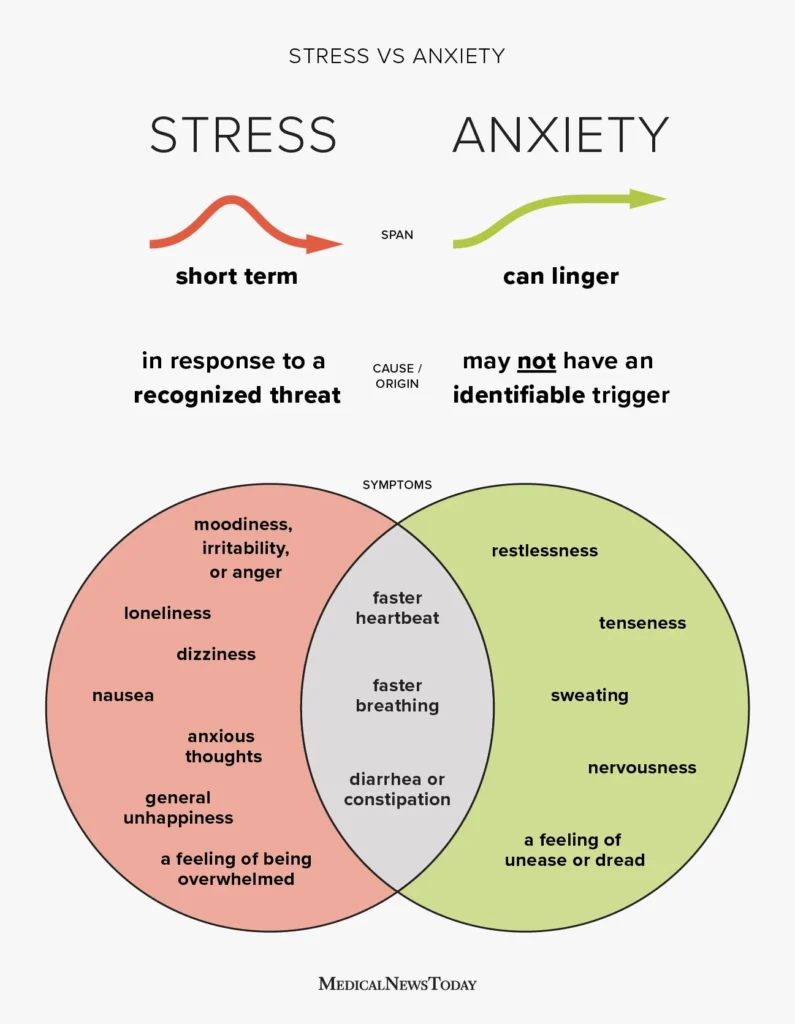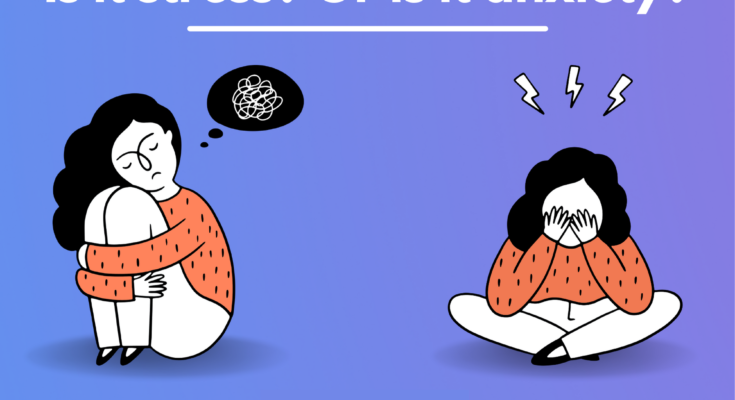Anxiety and stress both have comparable symptoms. Stress, however, usually occurs in response to a known threat and is transient. Anxiety may not have a clear trigger and may persist.
The body’s natural response to danger and the fight-or-flight response includes both stress and anxiety. This reaction is meant to make sure that the person is aware, concentrated, and prepared to handle a threat.
Anxiety and stress are both common, even though they can occasionally become overwhelming.
This article examines treatment options and management techniques while outlining the distinctions and similarities between stress and anxiety. It also describes the circumstances in which medical care may be beneficial.
- Differences between stress and anxiety

Anxiety and stress are components of the body’s instinctive fight-or-flight reaction. Stress hormones are released by the body when an individual feels threatened.
Stress hormones make the heart beat more quickly, which increases the amount of blood that is pumped to the limbs and organs.
A person can be prepared to fight or flee thanks to this reaction. They also have an increase in blood pressure and faster breathing.

Simultaneously, the body releases nutrients into the bloodstream to guarantee that every part has the energy it needs, and a person’s senses become more acute.
Stress is the term used by experts to describe this extremely rapid process. The body’s reaction to that stress is anxiety.
Anxiety is commonly defined as a state of distress, unease, or dread experienced prior to a significant event. It keeps people conscious and awake.
When someone perceives or experiences a real or imagined physical or emotional threat, their fight-or-flight response may activate. Even though it has its uses, some people find that it gets in the way of their daily lives.



